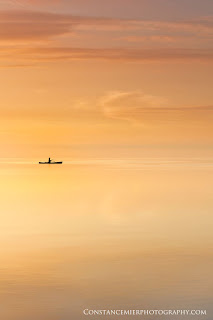 |
| One of many shapes of a red mangrove. |
Among the prints I sell, the long mangrove tree images seem to be the most popular. I don't say this to brag, I am only wondering out loud about lone trees and their appeal. They seem to be quite popular as art subjects but also popular in general. The Instagram account, #lonetree has over three quarter million posts. From Google map searches, you'll learn there is a Lone Tree church residing in Oklahoma, a Lone Tree reservoir in Arizona, Colorado, Nebraska and Utah, a town in Colorado and a small community in Iowa named Lone Tree and a road in TX, a parkway in CO and a Drive in SC with same name. Additional Instagram accounts tell us that many businesses and products including a brewery, designer quilts, farm, cider, golf course, ranch, board & paddle and kitchen & bath rely on the name "Lone Tree".
And we nature photographers clamor to capture the lone tree image. Lone tree photos are so popular that there is at least one lone tree in the world that has reached star fame and that is the willow tree on
Lake Wanaka in New Zealand.
 |
| Lake Wanaka's famous willow tree, by Justin Black. |
Even in the Everglades there is the Z tree, famous for its unique trunk growth. Maybe photographers go after the single tree because it provides a coveted uniqueness that makes one photograph stand out from all the others. Not to mention, trees come in all kinds of varieties, shapes, sizes and color, so they are there for the photographic picking.
I mostly photograph red mangrove trees, because, well they are everywhere. When out there photographing, I often notice floating in the water the seedlings that one day take root and grow, both vertically and horizontally. I have observed over time a tiny knee-high mangrove grow to eye level. I have photographed the remains of 50-ft tall mangroves killed by a hurricane storm surge. I have watched the survivors make a come back. And I have watched survivors deteriorate from repeated storm attacks until they finally succumb, and we are left with only a paltry reminder of what once was. The trees are the essence of the Everglades and to me, they are the most beautiful trees in the world. I guess that is why I photograph them. And I go for those lone trees as much as the next photographer.
 |
| This little red mangrove will grow by reaching out its roots. |
A photographer may see a solitary tree in one way, but what about the viewer? What is it about a lone tree image that draws the viewer in? Is it only the unique quality of it? Actually, it may have nothing to do with the aesthetics of art, rather we can find the answer in science. Scientific studies have shown that looking at trees reduces stress (leave it to scientist to find evidence to support the obvious). Given that images of several trees could have just as calming an effect as a lone tree image, than what is it again, that gives the lone tree a certain edge? Science may not have the answer to that one.
 |
| A clinical psychologist purchased my print to hang in her office thinking it would benefit her patients' recovery. |
So I set out to figure it out. If you Google search "lone tree" images, you will find several of the willow tree of Lake Wanaka, but you will also see quite a variety of other trees. Each tree has its own character (and of course, for each tree are endless possibilities for images). Even if the tree is clearly dead and stands with only its trunk and a few errant branches, it draws our interest. Is it because the tree is a piece of nature that grows in the same spot and never moves, while most everything else around us is unpredictable? In this regard, the tree may take on a symbolism for such qualities as stability, independence and reliability.
 |
| An independent red mangrove stands out from the crowd. |
But from an artistic view, there may be something else going on. I asked a photojournalist friend why lone trees are so appealing as art. She thinks its because it represents simplicity and beauty, and many people crave that in their busy lives. This makes sense to me as it becomes increasingly difficult to live simple lives. So we go to nature to relieve our stress and to simplify our life, if only for a short period of time. And for so many of us it seems, art is the only accessible means of capturing a glimpse of nature's simplicity. And the lone tree does not disappoint. The lone tree illustrates beauty in form surrounded by negative space. It stands alone, stalwart and as a true testament to the passage of time. It represents something that was there long before we discovered it and will be there long after we leave. I think our minds (or hearts) crave that comforting connection.
 |
| Much evidence that this tree survives the continual onslaught of tides and storms. |
The lone tree, no matter what condition it is in reminds us that strength carries us through weathered storms and with the right amount of resolve we are always left standing, sometimes beaten down but still supported by our roots.
On second thought, maybe it isn't about us at all. Maybe a lone tree is just a gentle reminder of nature's existence somewhere out there in the world. Period. Whatever it is, it works.
 |
| A hurricane survivor stands alone. |
























